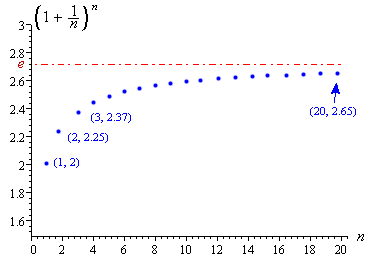As a result, greater deductible strategies will normally have lower premiums. Until these deductibles are met you are successfully not getting any of the cost-sharing advantages of having coverage. Comprehending this tradeoff is crucial in how you select a plan. The deductible structure of a health insurance plan is essential in choosing which prepare you choose because it determines when the provider begins to really pay.
If you have non-trivial and recurring health care costs choosing a deductible lower than the amount you invest is usually a good option. This guarantees that you will meet the requirements necessary for the insurer to offer advantages. The higher your expenses surpass the deductible the greater proportion of the costs will be borne by the insurance provider.
For those individuals with low anticipated healthcare expenditures, a more affordable plan with a greater deductible can make more sense. This reduces your ensured expense costs by minimizing the premiums you pay on a regular monthly basis. The only thing to consider is when picking a strategy is whether you have the financial means to cover the required deductible needs to an occurrence occur. how much does an insurance agent make.
It is really essential for families that have multiple member of the family covered under the same plan to comprehend how these 2 worths dictate their cost-sharing advantages. Beginning in 2016, deductibles for insurance strategies will become "ingrained." For each home, the health insurance coverage company will track the total Great site amount paid in deductibles for the entire household along with the amount paid toward deductibles for the care of each person because household.
If any relative fulfills the amount set by the private deductible, then the business will satisfy the cost-sharing advantages for that private and that individual only for the remainder of the year. If the family as a whole satisfies the quantity set by the household deductible then the family will begin paying out toward costs for every single relative for the rest of the year.

Numerous plans split out prescription-related costs into their own deductible classification. In such cases, a prescription deductible exists and is tallied individually from all other treatment. Policyholders for such plans will be required to spend for medication up to the quantity specified prior to the plan covers these expenses. For strategies where a prescription deductible is not defined, cost-sharing for medication will not start to work up until these requirements are met.
The Best Strategy To Use For Who Has The Cheapest Car Insurance
Strategies with an Rx deductible make it simpler for someone with high prescription costs to begin receiving the cost-sharing advantages used by the policy. While the majority of cost-sharing benefits just kick in once the deductibles have actually been satisfied, health strategies can and do make a few exceptions where copays enter into effect beforehand.

Other exceptions to deductibles offered by strategies include: Copays on a set number of check outs to medical care doctors. Many devastating and high deductible strategies will permit patients to pay a low copay for PCP visits even prior to deductibles are satisfied. A number of strategies provide to three visits to the PCP for a copay - what is a premium in insurance.
High deductible health insurance (HDHPs) can be an alternative if you're searching for health insurance with low premiums. Those lower premiums feature higher deductibles and out-of-pocket costs, though. So, you wind up paying more for health care services if you require it. Hide An HDHP is an option if you wish to pay lower premiums and understand you'll pay more for healthcare services.
A high-deductible strategy has a maximum of $7,000 for in-network out-of-pocket costs for single coverage and $14,000 for household coverage. Those costs consist of deductibles, copays and coinsurance. Single coverageFamily coverageMinimum deductible$1,400$2,800 Maximum in-network out-of-pocket costs$7,000$14,000 So, let's say you have a deductible of $3,000. You've not used your strategy for the year and you need a treatment that costs $4,000.
Then your coinsurance kicks in after $3,000. Coinsurance is the percentage of the health bill you need to pay after you reach your deductible. It's frequently 20% or 30%. The health insurance gets the rest. Millions have a high-deductible health insurance, but a brand-new Insure. com survey found that lots of sign up for an HDHP since their company does not provide a choice.
43% https://writeablog.net/buthir893i/another-reality-check-this-type-of-additional-living-costs-coverage-will-cover stated it was more economical. This was up from 33% in 2019. 27% said they didn't have a choice and their employer only offered an HDHP. The outcomes was almost identical to 2019 (28%). Companies and health insurance companies have actually significantly turned to high deductible plans as a way to bend the cost curve.
How How Much Homeowners Insurance Do I Need can Save You Time, Stress, and Money.
HDHPs are second just to chosen company organization (PPO) strategies. Forty-seven percent of members in employer-sponsored plans have a PPO.HDHP advocates state these plans give individuals "skin in the game." To put it simply, they'll be more taken part in their health care, avoid unnecessary care and reduce expenses if read more they need to pay more for services.
However, our Insure survey found that the huge bulk of people with a high deductible plan have not seen lower health care costs. Forty-six percent of individuals surveyed stated their expenses increased and 41% said they stayed the same - which of the following typically have the highest auto insurance premiums?. A mere 13% said their expenses decreased. These findings were almost similar to 2019's results when 46% said costs increased, 32% stated they remained the exact same and 11% stated they decreased.
The Insure. com study found that issue is a truth. Nearly half of individuals with an HDHP stated they've postponed care because of cost: 40% stated they put off care. This was below 56% in 2019. 55% said they haven't postponed care. 5% weren't sure. That's a problem not just for the strategy members, however the company and health insurance provider, too.
Another concern is that people with high-deductible strategies typically state their strategies aren't informing them to improve healthcare decisions. High-deductible health strategies were as soon as typically called consumer-directed health insurance (how much is an eye exam without insurance). An essential piece of those plans is informing patients to assist them end up being better healthcare consumers. Forty-three percent in the survey stated they feel like a better health care customer since of their strategy, which is a small increase from 39% in 2019.
The average deductible for HDHPs is $2,303 for a single strategy, a slight decline from 2019, according to Kaiser Household Foundation. Guarantee. com found that participants' single plan deductibles are normally between $1,701 and $4,000. That's well above the $1,400 threshold for a strategy to be thought about high deductible. Here are what the survey respondents said single coverage deductibles are: Between $1,701 and $2,499-- 33%$2,500-$4,000-- 26%More than $4,000-- 16%Less than $1,700-- 11%Kaiser Household Structure stated the typical HDHP yearly deductible for household protection is $4,552 for high-deductible employer-based plans in 2020.